Everest Base Camp Trek is one of the most preferred Himalayan trekking adventures in Nepal that is designated toward the base of the highest alpine peak in the world, Mt Everest (8,848.86 meters). This trekking prospect in the eastern Himalayan region of Nepal is certainly on the to-do list of every trekking lover around the globe.
If you are curious about this remarkable Himalayan excursion and wondering about how many days you need to go to Everest Base Camp, then it depends on what kind of package you are choosing. The general length of the Everest Base Camp Trek is about 12 to 16 days.
The duration of your Himalayan adventure will mostly depend on the route taken, side detours around the region, trekking pace, and acclimatization days included in the package. Everest Base Camp Trek 12 Days is the most standard duration to complete this iconic journey to the Himalayas that houses the world’s mightiest peak.
This standard trekking period covers the exploration of all the major highlights of this mainstream and also includes two days for the acclimatization period for trekkers to get enough rest and adapt properly to new altitudes along the journey.
Thus, if you are looking for the most optimized trekking package to the Everest Base Camp, this 12-day package is the ideal deal for you to enjoy the exploration without missing out on anything. The only difference between this itinerary plan and other lengthy packages is that the Everest Base Camp Trek 12 Days directly starts with the Kathmandu to Lukla flight and just covers itinerary plans for the trekking period.
How Many Days to Go Everest Base Camp Trek – Outline Itinerary
11 Night 12 Days Itinerary is the most standard itinerary plan for the Everest Base Camp Trek in Nepal. In this itinerary plan, you will finish the exploration of all major highlights in this mainstream trekking route, and you will also get enough acclimatization period so you can trek more comfortably.
Day 01: Flight from Kathmandu (1,400 meters) to Lukla (2,800 meters) and trek down to Phakding (2,651 meters)
Day 02: Trekking from Phakding to Namche Bazaar (3,430 meters)
Day 03: Acclimatization and exploration day at Namche
Day 04: Trekking from Namche Bazaar to Tengboche (3,870 meters
Day 05: Tengboche to Dingboche (4,360 meters) trek
Day 06: Rest and acclimatization day at Dingboche
Day 07: Trek from Dingboche to Lobuche (4,940 meters)
Day 08: Trekking from Lobuche to Gorak Shep (5,170 meters) to Everest Base Camp (5,364 meters)
Day 09: Morning hike to Kala Patthar (5,545 meters) and trek down to Pheriche (4,288 meters)
Day 10: Trekking to Namche Bazaar (3,430 meters) from Pheriche
Day 11: Namche to Lukla (2,800 meters)
Day 12: Fly back to Kathmandu (1,400 meters) from Lukla
Day-to-Day Itinerary Plans: Everest Base Camp Trek 12 Days
Everest Base Camp Trek 12 Days is a standard-length trekking adventure in the mainstream route. This exhilarating Himalayan journey starts with a direct flight from Kathmandu to Lukla, and you will immediately begin your trekking journey on the banks of the Dudh Koshi River to reach the Phakding Village. However, if you have bought a long-length trekking package, i.e., 15 or 16 days, your package will also include a sightseeing day in Kathmandu before you join the trekking trails on the mountain.
From Phakding, you will then climb uphill to reach the vibrant town of Sherpas, Namche Bazaar, which is a renowned town in the mainstream EBC Trek route. You will enjoy an acclimatization day here and take your time to adapt to the new altitude before trekking further. You will then gradually trek across the high-altitude Sherpa settlements like Tengboche and Dingboche. At Dingboche, you will enjoy another rest day and do some short hikes around the region to acclimatize properly. From Dingboche, you will head toward Lobuhce and trek past Gorak Shep to reach the base of the mighty Everest, Everest Base Camp.
However, your adventure doesn’t end at the base camp, the next morning, you will hike to the popular viewpoint in the Everest region, Kalapatthar, which is also the highest elevation gain point in this trip and is situated at an elevation of 5,644 meters. After enjoying the panoramic mountain views of the eastern Himalayas from this viewpoint, you will then make your descent to Pheriche before joining the mainstream Everest Base Camp Trek route at Pangboche. You will then trek down Tengboche to reach Namche Bazaar, from where you will make your descent to Lukla. The next day’s morning flight from Lukla to Kathmandu will officially mark the end of the Everest Base Camp Trek 12 Days.
Everest Base camp Trek Packages
Everest Base Camp Distance
The total Everest Base Camp distance is approximately 65 km (40 miles) from Lukla to the base camp. While hiking to Everest Base Camp, you will traverse across this much distance on the rugged and diverse terrains on the mainstream route in a single way. For the return journey, you will travel the same distance to reach Lukla for the flight back to Kathmandu. So, in total, you will trek about 130 km (80 miles) during your standard Everest Base Camp Trek 12 Days.
If your Himalayan journey also includes side explorations like Gokyo Lake Trek, Everest Three Pass Trek, or follows the classical Jiri to Everest Base Camp Trek route, then the overall trekking distance is much longer than the standard trekking package. In case if you are looking for a short-distance trekking adventure that fits perfectly with a limited vacation period then, the Everest Base Camp Trek With Helicopter Return is the most viable option. This helicopter return trekking prospect has a 9-day itinerary plan, and out of them, two are acclimatization days at Namche and Dingboche.
The Everest Base Camp distance in this mode of trekking is only about 65 km (40 miles), as you will fly back directly to Kathmandu after completing your hike to Kalapatthar. This helicopter return trek will cut off the trek distance of the return trip to Lukla and also make the journey much more comfortable, not to mention the epic aerial views of the pristine peaks.
Factors Influencing Trek Duration
There are several factors that affect the overall trek duration in this mainstream route, this influencing factors affect both day-to-day trek duration as well as the overall trekking period.
Physical Factors
Needless to say, the overall physical capabilities of the trekkers determine the pace and overall duration of the Everest Base Camp Trek. Naturally, fit trekkers can easily overcome the demanding trails that stretch to high elevation points in the region, and they will have more time to explore around the trails. However, for those who are not physically capable, covering even the day-to-day trek distance can take longer.
Compared to the fit trekkers who can cover more ground with their fast-paced trek, it is not possible for the trekkers who are not fit to cover the same length within their timeframe. So, the length of the journey will mostly depend on how easily the trekkers can overcome the physical demands of the trek.
Enroute Acclimatization Needs
In the Everest Base Camp Trek 12 Days, you will get two days of acclimatization period before pushing further into the high elevation points. It is important to acclimatize properly during high altitude trips so you can give your body enough rest periods as well mitigate the risks of Acute Mountain Sickness (AMS). But, if your EBC Trek explores other highlights of the region that are at significant altitudes, then you will need more acclimatization period.
Setting up more acclimatization days along the trail strategically is important to ensure the body gets enough rest and that trekkers adapt to new altitudes before heading to further elevation points.
Group Dynamic and Preferred Pace
If you are traveling with a dynamic group, then it is not possible for all the trekkers to have a uniform pace. Especially when your group comprises children and elderly trekkers then, it is important to consider the walking pace of every trekker. A young group with a good level of fitness can easily complete this iconic trekking in the eastern Himalayas within a short span.
However, for the trekking group with dynamic age group, enough resting period is important in the day-to-day trekking route as well in overall trip. So, the dynamic age trekking groups take it longer to complete the same trekking distance than the young-enthusiast trekking group.
Trek Preference
Custom designed itinerary plans are not new things in the Nepali trekking industry. In this category the trekking agencies custom-tailor most suitable itinerary plan for the trekkers depending on their adventure needs. Trekkers can also provide their own itinerary plans if they are familiar with the region and the agencies will design a trekking package based on those plans.
In the custom-tailored packages, the trekkers can adjust the overall length of the trek by themselves. If you and your friends want a short and sweet exploration with limited acclimatization period, you can request a shorter trekking package. You can also decide on the overall trekking pace and distance you want to cover in a single day in these types of packages.
Trekking Season and Weather Condition
The length of Everest Base Camp Trek is also majorly affected by the weather conditions and the season of visit. The EBC Trek is a seamless journey during the high seasons like spring (March to May) and autumn (September to November). The weather is stable during these peak seasons, and walking on trails is much more comfortable. However, if you are taking part in this Himalayan excursion during the off-seasons, like monsoon (June to August) and winter (December to February), the trip can be both challenging and lengthy.
Due to heavy rainfall and bad weather conditions in monsoon, you have to use a few of your contingency days. Similarly, the slippery and muddy trails affect the overall trekking pace, which can lengthen your day-to-day journey. On the other hand, during the winter season, due to extreme cold, the acclimatization process can take much longer, and traversing across trails covered with snow-covered trails can be a demanding endeavor.
Is Everest Base Camp Trek Right for Me?
This exciting exploration opportunity in the eastern Himalayas has been graded as a moderately difficult endeavor. Due to its milder difficulty factors, pretty much anyone can take part in this Himalayan adventure, and there aren’t any technical sections along the route as well. Still, as hiking to Everest Base Camp is a high-altitude journey, there are several factors you have to be mindful of in this trek. The overall trekking distance and the altitude gain are two of the challenging aspects of this trek that you need to prepare efficiently for. However, as these hurdles are not that challenging, you can overcome them with a good amount of physical preparation.
Strength exercises will improve your endurance level to meet the long hours of walking. Similarly, stamina and cardiovascular will make the trek feel easy as well as improve your body’s capabilities to adapt to the high altitude region. On top of that, during your trek, you will get enough acclimatization period before climbing to significant altitudes. So, overcoming these major hurdles of your Himalayan journey is not that much of a big deal. Also, the overall success rate of Everest Base Camp Trek is above 95%-97% with Great Adventure Treks. So, that gives you some insights on the actual difficulty grade of the trek if you are evaluating it as a strenuous journey.
In case if you are curious about the age restrictions for this trek, there aren’t any official age restrictions for the EBC Trek. Even children below thirteen and elderly trekkers in their 60s have successfully completed this classical Himalayan trekking adventure with us. So, whether you can do this trek or not depends entirely on how motivated and determined you are for this exciting Himalayan excursion.
Training and Preparation
Physical Preparation
If you are planning on taking this incredible exploration in the eastern Himalayas, you can make the journey more enjoyable and comfortable if you make an adequate amount of preparation. Normally, you are recommended to train for 3- 6 weeks; you can adjust the length and duration of training to your schedule after properly assessing your physical capabilities.
Developing your strength level should be your top priority in your training, as the rugged terrains of the Himalayas will test your endurance level. Similarly, the stamina and cardiovascular exercises will make the long hours of walking a comfortable experience. Besides working out routinely, you can also do some practice hike sessions in steep terrains close to you.
Strength and Endurance Exercises: Lunges, Push Up, Squat, Cal Raise, Crunch, Leg Raise, Pull Up, Leg Extension, Dips, Plank, Deadlift, Overhead Press, Step Up, etc
Stamina and Cardiovascular Exercises: Stair Climbing, Jogging, Cycling, Swimming, Dancing, Jumping Rope, Aerobics, Mountain Climber, etc
Mental Preparation
Like physical preparation, mental preparation is equally important for this Himalayan journey and plays a significant role in determining the overall success rate of your journey. The Himalayan region in Nepal is the remote and less-developed region of the country. Thus, if you are expecting top-tier services during your trek, like any other popular vacation destination, you might be disappointed.
Similarly, due to remoteness, the services and amenities offered by the teahouses gradually start to narrow down as you ascend to higher altitudes, where the settlements are pretty close to the absolute wilderness. Also, you will have to trek for long hours (approx. 6-7 hours) during the trekking days across the rugged and steep sections of the Himalayas; your physical capabilities and mental resilience should be in synch if you want to easily overcome the obstacles in your journey.
Mental Preparation Practices
- Stay positive
- Practice leaving your comfort zone
- Stay focused and motivated
- Surround yourself with positive people
- Learn to visualize your journey
- Practice controlled breathing
- Meditate
- Be flexible
- Build resilience
When Should You Do Everest Base Camp Trek 12 Days?
You can take part in Everest Base Camp Trek 12 Days every season throughout the year. It is totally up to you to decide the season of your Himalayan adventure, depending on what kind of experience you are looking for. Still, the high seasons, like spring (March to May) and autumn (September to November), are considered to be the best period for an invaluable experience. Both of these seasons have calm climatic conditions, pleasant temperatures, and their own unique add to the abundant natural beauty that makes the experience magical.
Spring is famous as the season favored by nature; you will find the entire landscape covered with lush greenery and adorned with vibrant, bright flowers. It is also high time to explore the endangered flora and fauna of the Sagarmatha National Park, a UNESCO World Heritage Site. Similarly, the autumn season is popular for its dry trekking trails, ideal temperatures, unique shades of the fall seasons, and incredible Himalayan vistas under the clear blue skies. The autumn season is also the core period when major festivals like Dashain, Tihar, Chhath, Mani Rimdu, etc take place. So, you will be able to add memorable cultural experiences to your Himalayan adventure during this season.
Temperature of Everest Region During Spring: 5°C to 25°C
Temperature of Everest Region During Autumn: 4°C to 18°C
Expert Tips and Advice for Everest Base Camp Trek 12 Days
- Prepare yourself physically and mentally before trek
- Trek slowly and drink enough water (recommended hydration limit is 3-4 liters)
- Monitor your diet and eat balanced meals
- Keep yourself warm and pack the right layers for different climatic zones
- Avoid alcohol and cigarettes during the trek
- Trek with an experienced guide and hire a porter who is a local resident
- Stick with guides and suggestions from your guides/porters
- Communicate clearly if you are facing any kind of issues
- Respect local culture and traditions

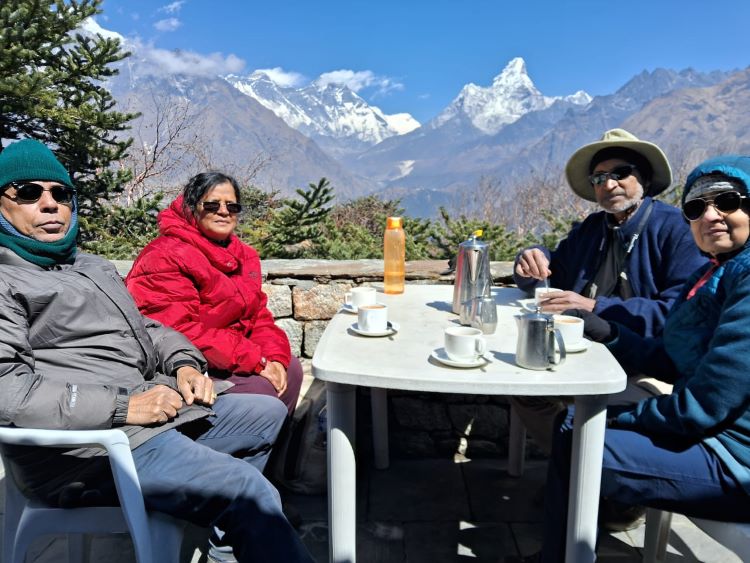
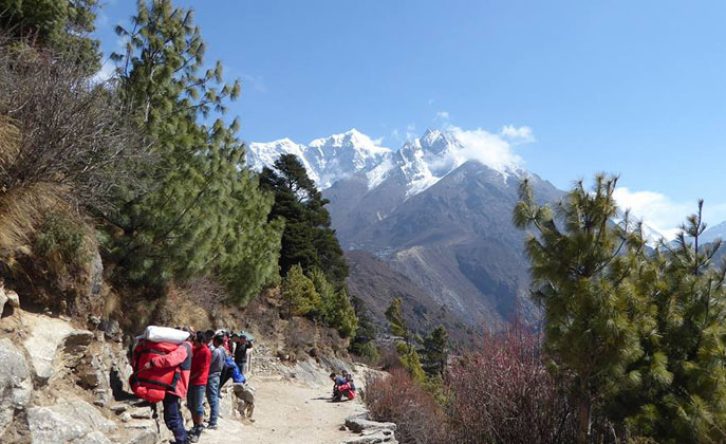
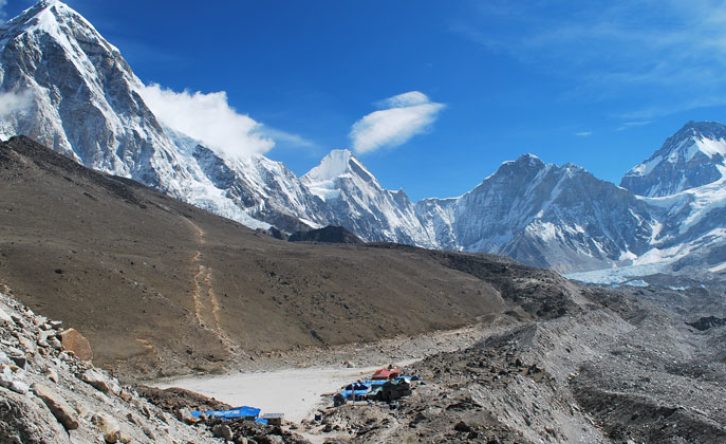
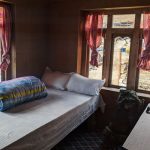 Monday, July 7th, 2025
Monday, July 7th, 2025
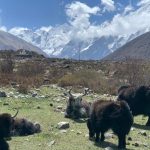 Monday, July 7th, 2025
Monday, July 7th, 2025
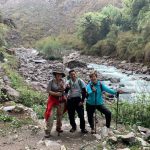 Wednesday, June 25th, 2025
Wednesday, June 25th, 2025
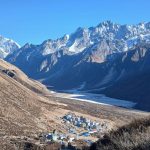 Sunday, June 22nd, 2025
Sunday, June 22nd, 2025
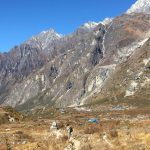 Saturday, June 14th, 2025
Saturday, June 14th, 2025
 Sunday, June 8th, 2025
Sunday, June 8th, 2025
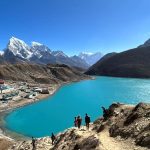 Wednesday, June 4th, 2025
Wednesday, June 4th, 2025
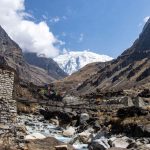 Friday, May 9th, 2025
Friday, May 9th, 2025
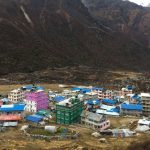 Tuesday, February 25th, 2025
Tuesday, February 25th, 2025
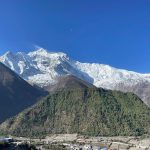 Friday, May 16th, 2025
Friday, May 16th, 2025
